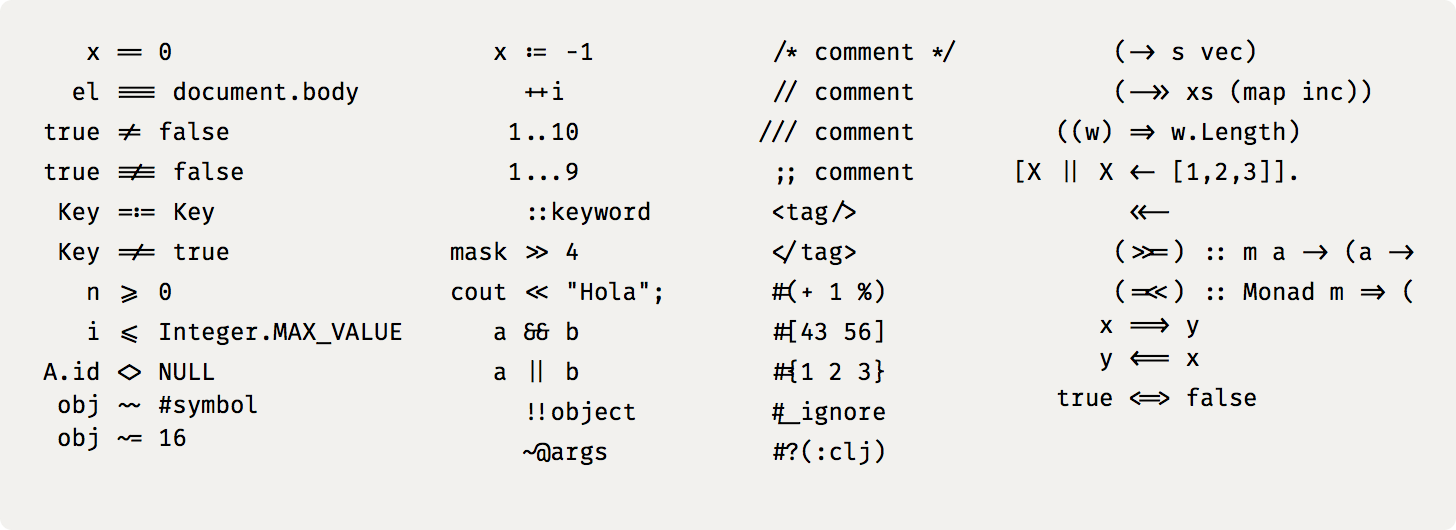| Fira Code-Regular.ufo | ||
| showcases | ||
| FiraCode-Regular.otf | ||
| FiraCode-Regular.ttf | ||
| firacode_showcase.txt | ||
| LICENSE | ||
| README.md | ||
Fira Code: monospaced font with programming ligatures
Download Fira Code v0.5
Problem
Programmers use a lot of symbols, often encoded with several characters. For human brain sequences like ->, <= or := are single logical token, even if they take two or three places on the screen. Your eye spends non-zero amount of energy to scan, parse and join multiple characters into a single logical one. Ideally, all programming languages should be designed with full-fledged Unicode symbols for operators, but that’s not the case yet.
Solution
Fira Code is a Fira Mono font extended with a set of ligatures for common programming multi-character combinations. This is just a font rendering feature: underlying code remains ASCII-compatible. This helps to read and understand code faster. For some frequent sequences like .. or // ligatures allow us to correct spacing.
Fira Code (with ligatures):

Compare to Fira Mono (without ligatures):

Editor support
Please refer to Hasklig Readme for editor support
Note: I’m not a font designer, and Fira Code is built in sort of a hacky way from OTF version of Fira Mono. Please forgive me if it doesn’t work for you. Help will be greatly appreciated.
Code examples
Ruby:

JavaScript:

Erlang:

Go:

Haskell:

Credits
This work is based on OFL-licensed Fira Mono font. Original Fira Mono font was not changed, only extended.
Fira Code was inspired by Hasklig font: Ligatures for Haskell code
Changelog
0.5: #{ ~- -~ <== ==> /// ;; </
0.4:
- Added
~=~~#[ - Rolled back
&&and||to more traditional look ===and!==are now rendered with 3 horisontal bars
0.3: ~@ #? =:= =<
0.2.1: Fixed width of && and ||
0.2: --> <-- && || =>> =/=
0.1
>>= =<< <<= ->> -> => <<- <-
=== == <=> >= <= >> << !== != <>
:= ++ #( #_
:: ... .. !! // /* */ />